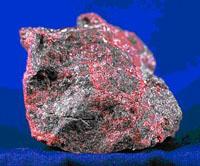International Actions for Reducing Mercury Emissions and Use
- Data collection and inventory development,
- Source characterization, and
- Best practices for emissions and use reduction.
In 2013, the United States joined the Minamata Convention on Mercury, a new multilateral environmental agreement that addresses specific human activities which are contributing to widespread mercury pollution. Implementation of this agreement will help reduce global mercury pollution over the coming decades.
Learn about EPA's International Work on Mercury:
On this Page:

On other pages:
- Minamata Convention on Mercury
- Mercury Emissions: The Global Context
- Reducing Mercury Pollution from Artisanal and Small-Scale Gold Mining
- Artisanal and Small-Scale Gold Mining Without Mercury
UNEP Global Mercury Partnership
- Mercury Emissions from Coal – International Energy Agency Clean Coal Center
- Mercury Air Transport and Fate Research – Consiglio Nazionale delle Ricerche (CNR) Institute for Atmospheric Pollution, Italy
- Mercury Waste Management – Government of Japan
- Mercury Cell Chlor Alkali Production – Government of the United States (Environmental Protection Agency)
- Artisanal and Small Scale Gold Mining – Natural Resources Defense Council (NRDC), United Nations Industrial Development Organization (UNIDO)
- Mercury Supply and Storage – Government of Spain, Government of Uruguay
- Mercury in Products – Government of the United States (Environmental Protection Agency)
- EPA’s involvement and contribution to the Global Mercury Partnership.
- Official UNEP Partnership Page Exit
Regional Activities on Mercury
Mercury in the Arctic
- Provided support for the development of Russia's first comprehensive mercury emission inventory (now updated and captured in UNEP’s 2008 Global Atmospheric Mercury Assessment) (PDF) (44 pp, 6.8 M, About PDF) Exit
- Supported the first regional (eight-country) Arctic emission inventory (also captured in UNEP’s 2008 Global Atmospheric Mercury Assessment); and
- Supports emissions reduction demonstration projects in close cooperation with the UNEP Global Mercury Partnership and other organizations.
- The U.S. Mercury Emission Inventory for the Arctic Council Action Plan (PDF) (10 pp, 42 K, About PDF)
- EPA’s work with the Arctic Council
- Arctic Council home page Exit
Asia
The U.S. has developed bilateral mercury cooperation programs to foster assessment and sector-specific improvements in a number of countries including China and Indonesia.
Europe
- Aims to cut emissions from industrial sources (iron and steel industry, non-ferrous metal industry), combustion processes (power generation, road transport), and waste incineration.
- Includes strict limit values and deadlines for emissions reductions for new and existing stationary sources and suggests Best Available Techniques (BAT) for these sources.
- Contains measures to reduce emissions of heavy metals emissions from products, such as leaded gasoline and mercury in batteries, through the mandatory phase-out of leaded gasoline and mandatory mercury concentration limits for certain types of batteries.
North America
Great Lakes Binational Toxics Strategy
The 1997 Canada-United States Strategy for the Virtual Elimination of Persistent Toxic Substances in the Great Lakes Basin, known as the Great Lakes Binational Toxics Strategy, created a framework for addressing mercury pollution in the Great Lakes Basin by establishing a goal of "virtual elimination" of anthropogenic mercury inputs to the Great Lakes, as well as by establishing goals of reducing U.S. mercury emissions and use by 50% and reducing Canadian mercury releases by 90%.
The Strategy established a workgroup of U.S. and Canadian federal, state and local government officials, industry, and environmental groups, who shared information about cost-effective mercury reduction approaches. The Strategy was successful in gaining commitments for voluntary mercury reduction from the chlor-alkali industry, which committed to reduce its mercury use by 50% (actually achieving more than 95%); from the American Hospital Association for the virtual elimination of mercury from hospital waste, and from northwest Indiana steel mills; who inventoried their mercury-containing equipment and reduced it by more than 80%. The workgroup has ceased its activity, having achieved its interim reduction goals.
North American Regional Action Plan on Mercury
New England Regional Mercury Action Plan
Contacts
